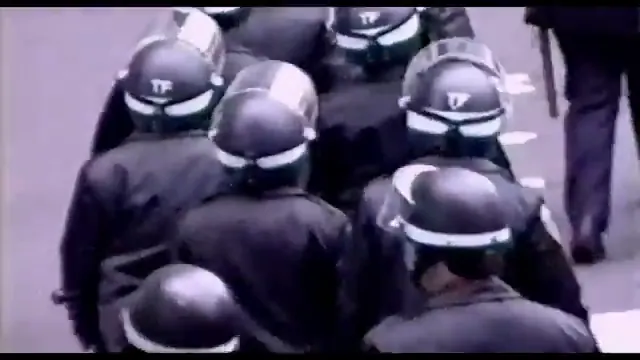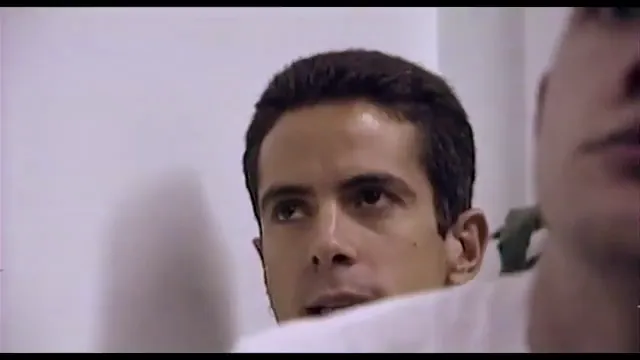🎯 Quick Overview
Trailer
- Director: David France
- Genre: Documentary, History
- Release year: 2012
- Runtime (length): 1h 50min
- IMDb rating: 7.8/10 (5.8K votes)
- Rotten Tomatoes: 98%
😅 Plot Summary – Badly Explained
Facing a mysterious plague the government mostly ignores, a group of furious citizen-scientists decides the best plan is to yell *really* loudly at everyone in power until life-saving drugs magically appear.
🍿 How to Survive a Plague: Detailed Plot Synopsis
The Onset of a Crisis (Mid-1980s)
In the early 1980s, a mysterious illness begins claiming the lives of young men, particularly within the gay community. With little public acknowledgement or understanding from the medical establishment or government, fear and death spread rapidly. An AIDS diagnosis becomes a near-certain death sentence, leaving affected communities feeling abandoned.

Formation of ACT UP
Driven by frustration and a desperate need for action, activists, many of whom are themselves living with AIDS, form the AIDS Coalition to Unleash Power (ACT UP) in 1987. Led by figures like Larry Kramer, the group adopts confrontational tactics to demand a meaningful response to the epidemic. Their goal is to force government agencies, pharmaceutical companies, and the public to acknowledge the crisis and prioritize research and treatment.

Protests and Direct Action
Using potent, often theatrical demonstrations, ACT UP targets institutions perceived as hindering progress or ignoring the crisis. Protests are held at the FDA, the National Institutes of Health (NIH), pharmaceutical companies, and even St. Patrick’s Cathedral to challenge perceived inaction, slow drug approval processes, and religious condemnation. The film extensively uses archival footage captured by the activists themselves, showcasing their raw anger and determination.

Becoming the Experts
Recognizing the slow pace of traditional research and the lack of expertise among officials, activists like the Treatment Action Group (TAG), a spin-off from ACT UP, begin educating themselves on virology, clinical trials, and drug development. Figures like Iris Long, a retired chemist, provide crucial scientific guidance. They engage directly with scientists and regulators, advocating for accelerated drug trials and access to promising compounds, sometimes resorting to underground distribution.

⚠️ Spoilers and Ending Explained
🎬 Cast & Characters
- Peter Staley (Self – Bond Trader): A key activist and former bond trader who used his strategic skills to help lead ACT UP’s fight for AIDS treatments.
- Larry Kramer (Self – Writer): The provocative writer and founder of ACT UP who passionately pushed for urgent and aggressive action against the AIDS epidemic.
- Iris Long (Self – Retired Chemist(archive footage)): A retired chemist who provided essential scientific knowledge to the activists, empowering them to engage with pharmaceutical companies and government agencies.
- Bob Rafsky (Self – PR Executive(archive footage)): A PR executive turned activist known for his confrontational style, particularly in challenging political figures about their response to the epidemic.
- Mark Harrington (Self – Film Archivist): A prominent activist who focused on understanding the science of AIDS and advocating for promising new drug research and trials.
- Anthony Fauci (Self): A leading figure at the National Institutes of Health whose role in government research and interactions with AIDS activists are documented.
- Jesse Helms (Self – R – North Carolina(archive footage)): A conservative US Senator who publicly expressed hostility towards the gay community and represented the political indifference and prejudice faced by activists.
💬 Memorable Quotes
- Larry Kramer: “Plague! We’re in the middle of a fucking plague, and you behave like this?” – Exclaimed by Larry Kramer in frustration during an internal ACT UP meeting as disagreements and infighting threatened the group’s focus during a critical time.
- ACT UP Members: “ACT UP! Fight back! Fight AIDS!” – A central, often chanted slogan and call to action used during protests, embodying the movement’s core mission and defiant spirit.
- Iris Long: “We had to become the experts.” – Reflecting on how activists without formal scientific training educated themselves deeply on virology, drug development, and clinical trials to effectively challenge the medical and pharmaceutical establishments.
- Peter Staley: “It was a time when you measured your life in months.” – Describing the grim reality faced by people with AIDS in the early years of the epidemic when effective treatments did not exist.
- Survivor: “And then, suddenly, it changed.” – Referring to the breakthrough discovery of protease inhibitors in 1996 that dramatically transformed AIDS from a death sentence into a manageable chronic condition.
💰Box Office
- Budget:
- Domestic Gross: $132,055
- Worldwide Gross: $132,055
💥 How to Survive a Plague Reviews
Personal Review
Wow, this documentary hit me hard. Watching it felt less like watching history and more like being dropped right into the middle of the crisis with these incredibly brave people. I was amazed by their determination and intelligence, especially how they educated themselves on the science to challenge the FDA and pharma companies. Seeing the footage of their protests and meetings, and knowing they were literally fighting for their lives and the lives of their friends, was incredibly moving. It’s bittersweet because you see so much loss, but then the breakthrough moments feel like genuine triumphs against impossible odds. This film makes you feel deeply connected to their struggle and really appreciate the progress that was made because of them. It’s a powerful reminder of what focused, passionate activism can achieve.
- Who would enjoy:
- “Fans of historical documentaries”
- “Viewers interested in activism and social justice movements”
- “Those interested in LGBTQ+ history”
- “Students of public health and science policy”
- “Anyone seeking inspiring stories of perseverance against adversity”
- Content warnings ⚠:
- “Depictions of illness and death (archival)”
- “Strong language”
- “Intense protest scenes (shouting, arrests)”
- “Discussion of discrimination and prejudice”
Professional Reviews
- Film Weekly: “David France’s documentary is an utterly compelling dive into the early AIDS crisis. Using stunning archival footage, it thrusts you into the heart of ACT UP’s fight, showcasing the raw courage and strategic brilliance of activists who refused to die quietly. It’s a vital historical record and a powerful lesson in the impact of relentless advocacy. Emotionally resonant and deeply inspiring.
- Documentary Today: “”How to Survive a Plague” offers an unflinching look at an American tragedy and the heroes who emerged from it. The seamless editing of historical footage creates a narrative that feels both immediate and epic. While intensely focused on the activist perspective, it’s a necessary document highlighting the fight for human rights and the groundbreaking work that shifted the course of an epidemic.
- Indie Scene: “A powerful, sometimes difficult watch, this film chronicles the vital activism of ACT UP and TAG through a treasure trove of archival material. It effectively conveys the desperation and anger of the time, though at points the repetitive nature of protest footage can feel a bit drawn out. Still, the personal stories and the ultimate impact of their work make this an essential historical piece.
Audience Reactions
People were deeply moved by the courage and ingenuity of the activists.: The use of authentic archival footage made the history feel incredibly real and immediate, showcasing the intense struggle and personal cost.
Many found it a powerful and necessary history lesson about the AIDS epidemic.: Viewers praised the film for highlighting the crucial role of activism in forcing change and saving lives when institutions were failing.
Overall Consensus: A widely praised, powerful, and essential documentary offering a raw and inspiring look at the activists who fought to turn the tide of the AIDS epidemic.
Awards
- Gotham Independent Film Award (Best Documentary)- 2012
- Independent Spirit Award (Best Documentary)- 2013
🛠️ Behind the Scenes
- “Director David France, a journalist covering the AIDS crisis since 1981, had access to over 700 hours of raw, previously unseen archival footage, much of it shot by activists who themselves died from AIDS, forming the core of the film’s narrative.”
- “The timing of the AIDS epidemic in the 1980s coincided with the rise of consumer camcorders, allowing activists to document their struggle in unprecedented detail, providing the filmmakers with a unique historical record.”
- “The film took over 10 years to complete, involving the meticulous process of locating, digitizing, and cataloging hundreds of hours of diverse footage from various archives and personal collections.”
- “Several key figures prominently featured in the archival footage, like Mark Harrington and Peter Staley, are among the survivors interviewed in the present day sequences, providing a poignant contrast between the past struggle and their survival.”
🖥️ How to Watch How to Survive a Plague?
Discover where to watch the powerful documentary ‘How to Survive a Plague’. This film is often available for streaming on platforms like Prime Video, Apple TV, and Kanopy (via library access). You can typically rent or purchase the film digitally through major retailers such as Amazon Prime Video, Apple TV, Google Play Movies, and Vudu. Check your preferred service for current availability.

🎥 Similar Movies
If you enjoyed How to Survive a Plague, you might like these similar films:
- We Were Here (2011): A powerful documentary telling the story of the AIDS epidemic’s impact on San Francisco, focusing on the human stories and the community’s response, serving as a complementary perspective.
- Paris Is Burning (1990): This documentary explores the drag ball culture in NYC around the same time, offering insights into the lives, struggles, and resilience of the LGBTQ+ community heavily impacted by AIDS.
- Pride (2014): A narrative film based on the true story of gay activists supporting striking miners in the UK, showcasing the power of grassroots activism and cross-community solidarity against adversity.
- Crip Camp (2020): Documents the disability rights movement stemming from a summer camp, highlighting how marginalized communities organized, educated themselves, and used direct action to fight for their rights and access, mirroring the ACT UP/TAG approach.
- The Times of Harvey Milk (1984): An essential documentary about the life and assassination of Harvey Milk, an early openly gay politician, chronicling the rise of the gay rights movement in the 1970s, providing crucial context for the activism seen in ‘How to Survive a Plague’.
🛒 How to Survive a Plague Related Products
- Let the Record Show: A Political History of ACT UP New York: A comprehensive, oral history drawing from interviews with hundreds of ACT UP members, providing deep insight into the strategies, debates, and impact of the organization.
- We Were Here (Documentary Film): Another acclaimed documentary focusing on the AIDS epidemic in San Francisco, providing a complementary perspective to the New York-centric story of ‘How to Survive a Plague’.
- The Normal Heart and Other Plays by Larry Kramer: A collection including Larry Kramer’s seminal play ‘The Normal Heart’, depicting the early days of the AIDS crisis and the fight for recognition and action.
- AIDS: An Accidental History (PBS Frontline Documentary): A documentary series exploring the scientific and social history of AIDS, including the race for treatments.
🎧 Soundtrack
How to Survive a Plague features a captivating soundtrack that enhances the movie’s atmosphere and emotional impact. Here are some notable tracks:
You can find the complete soundtrack on Amazon Music and Apple Music.
🤨 FAQ
ACT UP stands for AIDS Coalition to Unleash Power. It was a grassroots political group formed in 1987 to fight for legislation, research, and treatment to combat the AIDS epidemic. The film ‘How to Survive a Plague’ documents their intense activism.
The documentary features many prominent activists from ACT UP and TAG. Key figures highlighted include Larry Kramer (writer and co-founder), Peter Staley (bond trader turned activist), Iris Long (retired chemist), and Mark Harrington (film archivist and later TAG member), among others who bravely fought for change.
The film covers the period leading up to the approval of highly active antiretroviral therapy (HAART), particularly drugs like protease inhibitors, around 1996. This combination therapy was the first effective treatment that significantly suppressed the virus, transforming AIDS from a death sentence into a chronic condition for many.
‘How to Survive a Plague’ primarily focuses on the years 1987 to 1996, which were arguably the most intense years of activism and scientific struggle for effective treatments in the US. While the epidemic began earlier (early 1980s) and continues today, the film centers on this pivotal decade of the activist movement.
🔥 Bonus Content
Eating Before And After The Military. #shorts
Ever wonder how eating habits change after military life? This hilarious short might give you a peek – I was cracking up at the relatable (or maybe not-so-relatable?) changes!
Why does Marshmello wear a mask?
Curious why Marshmello hides his face? This quick video spills the beans on the surprising reason behind the mask – it’s actually kinda cool and goes deeper than you might think!
eyebrows threading #eyebrowthreading #support #subscribetomychannel #browthreading
Get ready for some satisfying visuals! This video shows the detailed process of eyebrow threading – it’s mesmerizing how precise it looks!
finding a straight guy at pride 🏳️🌈👀
Navigating Pride can be an adventure! This short captures a funny moment trying to find a straight guy in the crowd – I bet you can relate to awkward social situations like this!
✨ Rate
There are no reviews yet. Be the first one to write one.





